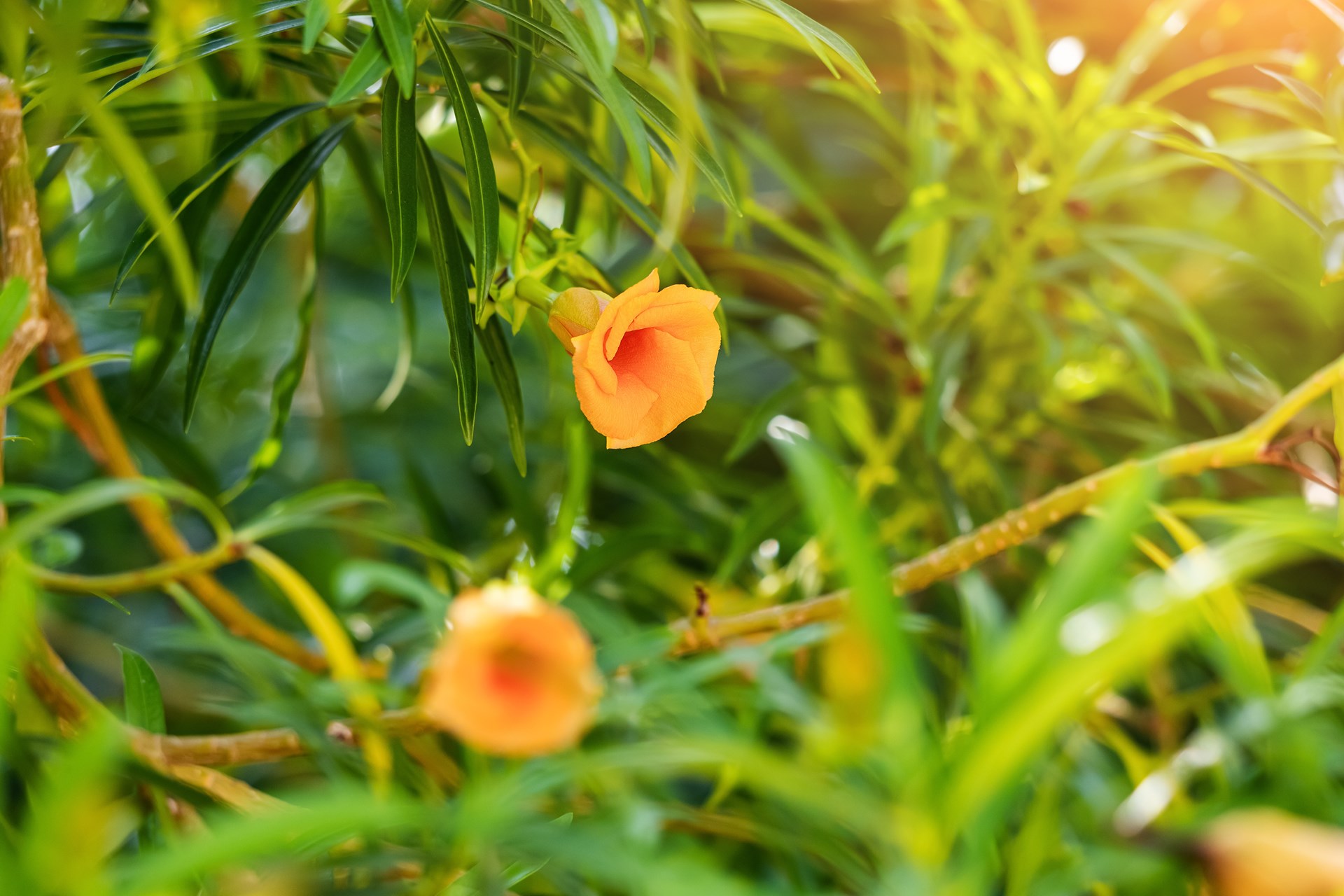

ABOUT CAMANA BAY
A visionary town
Designed on the principles of New Urbanism, Camana Bay is a beautiful waterfront town with sustainability at its core. Walkable neighbourhoods, energy-efficient buildings, shared community spaces, an abundance of plants and trees, renewable energy solutions, outstanding education and healthcare facilities — it’s all about living well yet treading lightly, now and long into the future.
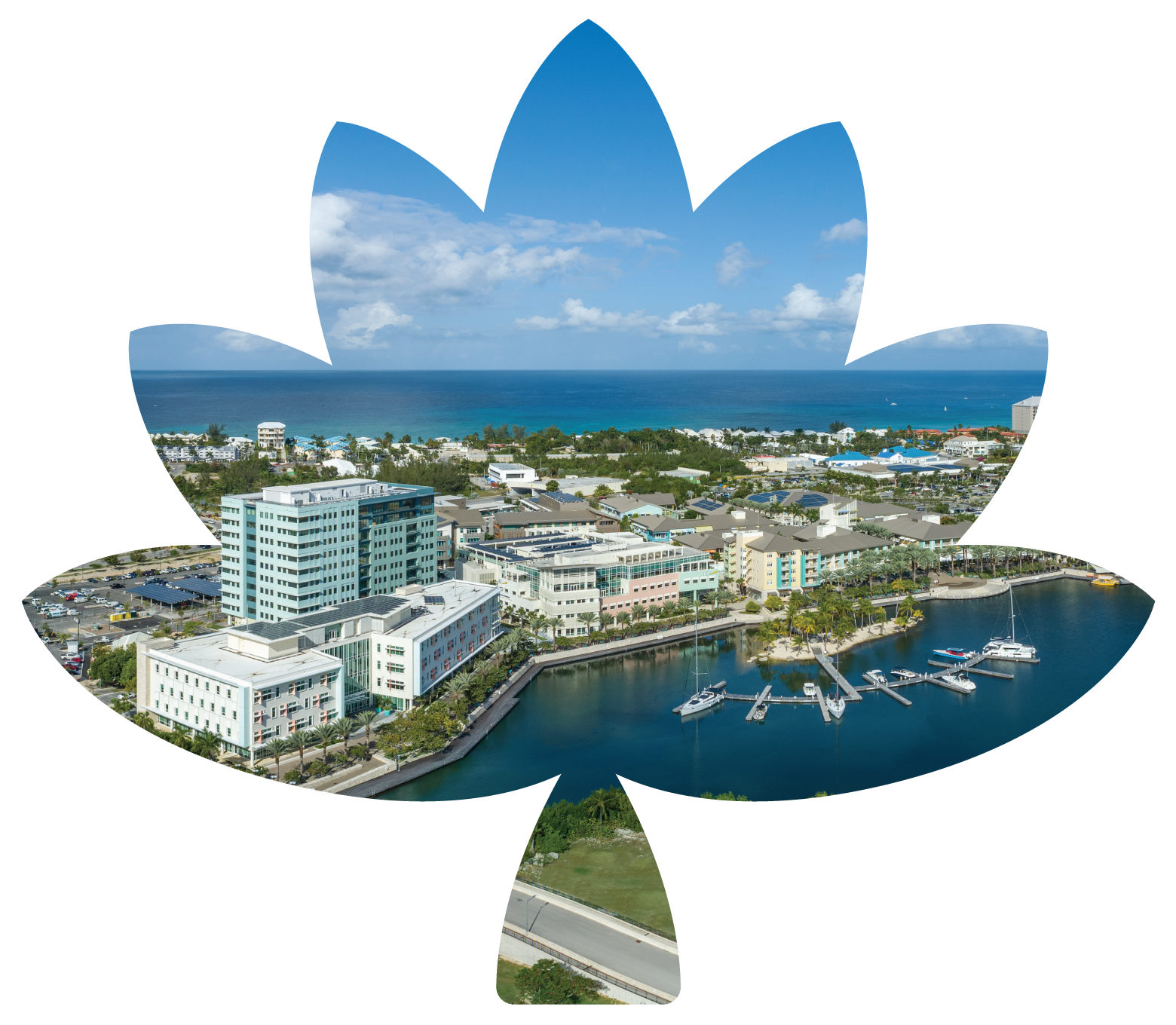
OUR APPROACH
From the earliest stages of planning Camana Bay, we’ve taken a holistic approach to sustainability, considering every aspect of what makes a town tick — from the design of its buildings to the ways people access services and amenities.

As a New Urbanist town, Camana Bay is tailor-made for walking. But if you’re not in the mood for a stroll, there’s also easy access to bicycles, e-bikes, e-scooters, an electric bus, and car sharing services.

Investment in health and wellness is another key piece of the sustainability puzzle. That’s why we’re currently developing a 70,000-sq-ft medical campus offering world-class healthcare at a local level.

We’ve built Camana Bay’s commercial and residential buildings to LEED® certification standards, ensuring best-in-class sustainable design, building practices and operations.

To reduce the heat island effect, we not only use judicious planting and elegant shades and awnings — the town is actually oriented to harness the prevailing breezes for natural cooling.

To keep buildings cool and comfortable, Camana Bay uses a chilled water system that’s more efficient than regular air conditioning. In 2021, this saved an estimated 2,000 metric tonnes of CO2e.

Clean, affordable energy is integral to sustainable living. So we’ve installed 12 solar arrays across the town, with more to come, avoiding emissions of more than 4,800 metric tonnes of CO2e to date.

In 1996 we set up the Dart Nursery to grow native and climate-adapted plants and trees. Now used in landscaping throughout Camana Bay, they help to promote biodiversity and reduce water consumption.

Good educational facilities empower the next generation to tackle the sustainability challenges ahead — and in Cayman International School and Village Montessori, Camana Bay boasts some of the very best.
THINKING GREEN
Reduce, reuse, recycle
As well as using solar arrays to generate clean, renewable energy from our plentiful sunshine, we also make good use of the Cayman Islands’ occasional downpours. A 190,000-gallon cistern beneath Camana Bay Cinema captures rainwater, which is then used to irrigate landscaped areas and flush toilets in our buildings.
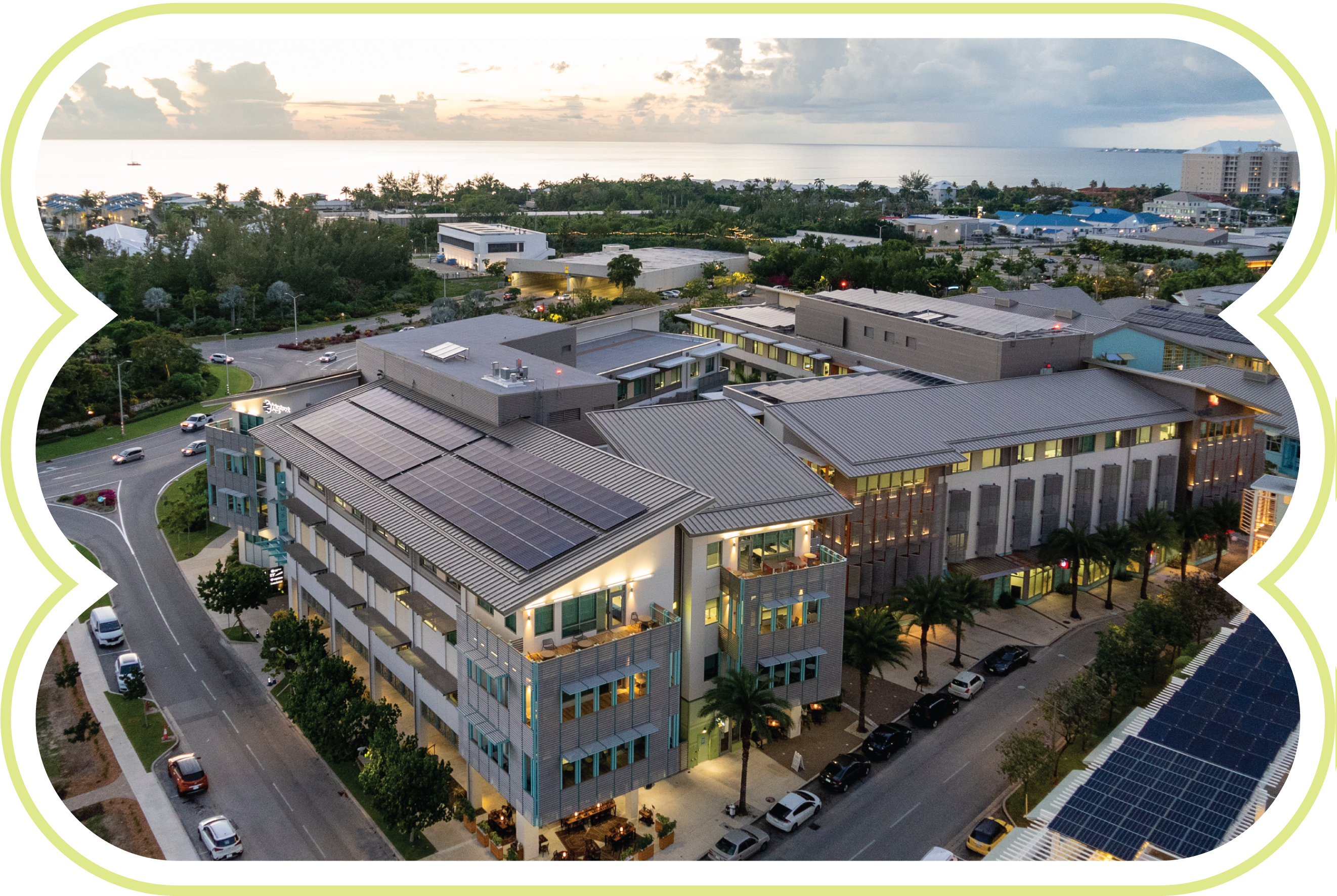
NEW URBANISM
A master-planned community, Camana Bay was designed using the 10 principles of New Urbanism, a holistic approach to planning and development with an emphasis on sustainability.

Walkability
Most things are within a short walk of home and work via pedestrian-friendly streets.

Connectivity
Interconnected street networks ease traffic and make walking pleasurable.

Mixed-use and diversity
Neighbourhoods offer a mix of shops, offices and homes, and are populated by a diverse range of people.

Mixed housing
You’ll find homes in a range of styles, sizes and prices, all within close proximity.

Quality architecture & urban design
Aesthetically pleasing, human-scale buildings and surroundings create a sense of place and community.

Traditional neighbourhood structure
Towns and cities have a discernible centre with progressively less building density towards the edge.

Increased density
Homes, businesses, shops and services are closer together for day-to-day convenience and walkability.

Green transportation
A high-quality public transport network is complemented by pedestrian and cycling-friendly streets.

Sustainability
Environmental impact is minimised by eco-friendly technologies, energy efficiency and local production.

Quality of life
Above all, the places people live and work are designed to enrich their lives and uplift their spirits.
Get the full picture
Want to learn more about our approach to sustainability? Download and read “Where sustainability blossoms.”
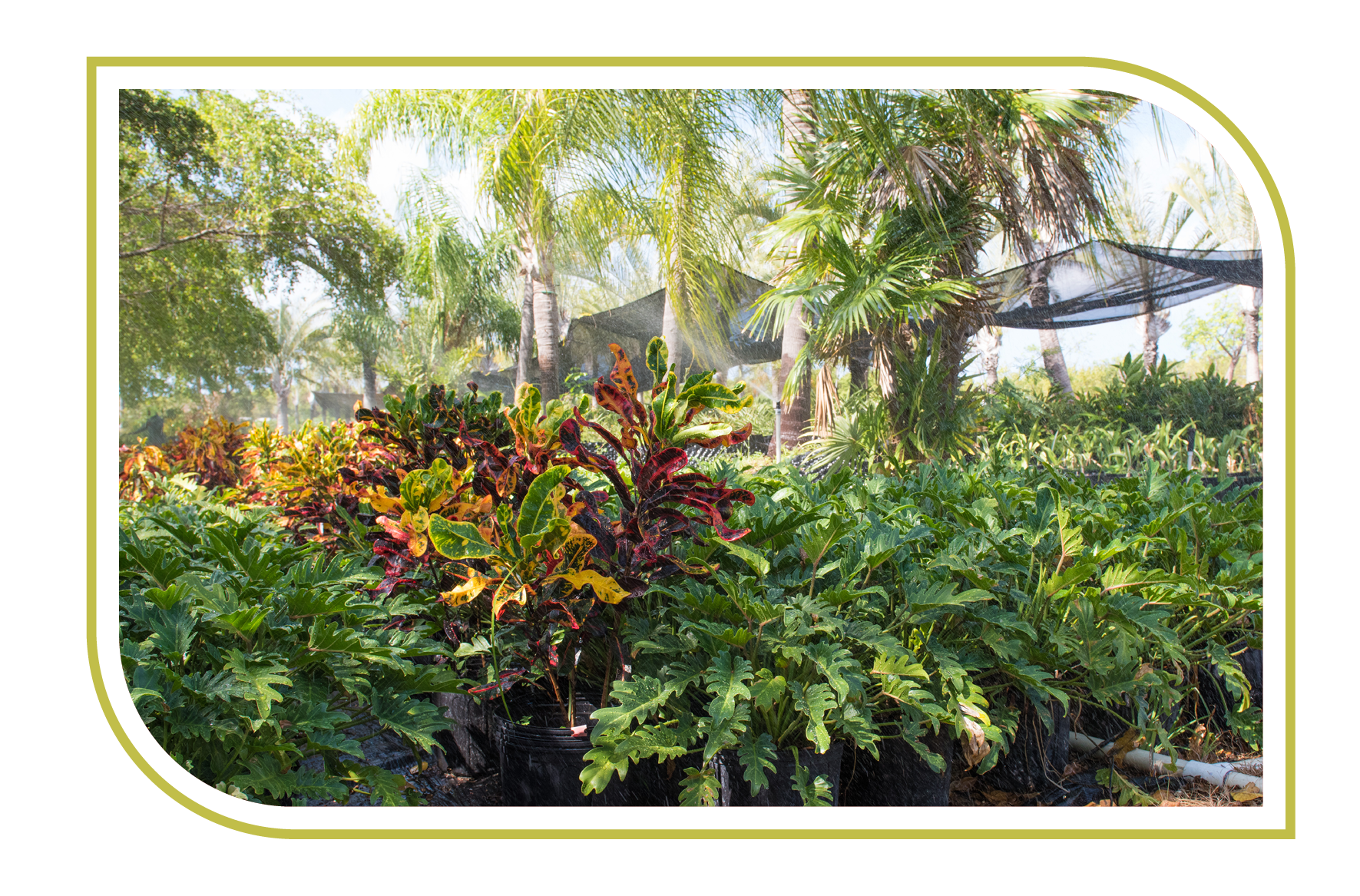
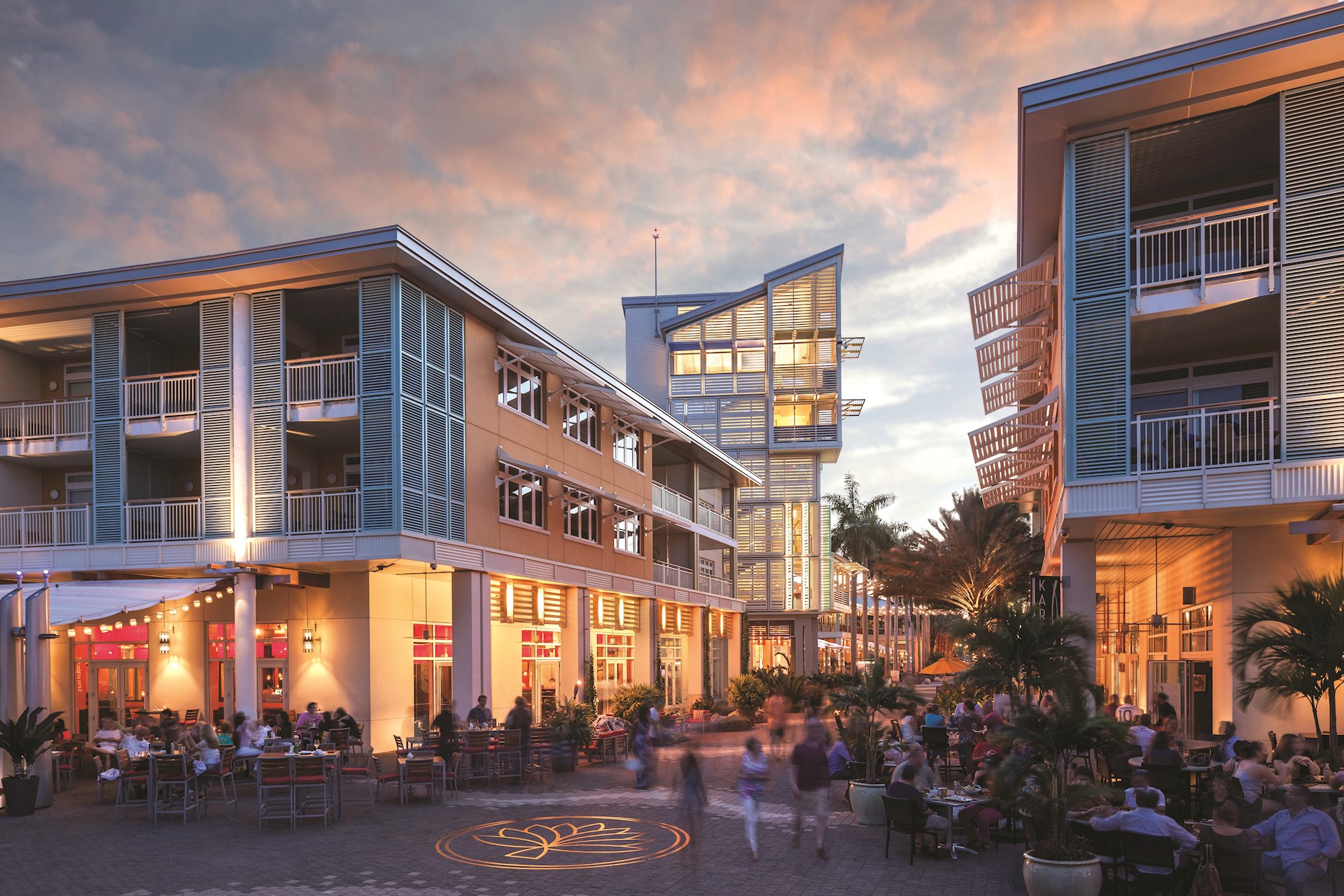
In the context of Cayman, a geothermal system (also known as ground source cooling) is used for cooling by transferring heat to the ground or groundwater that is cooler than the ambient temperature.
A geothermal system can be a closed loop, utilising a series of buried water-carrying tubes that exchange heat with the surrounding ground, or an open loop, which utilises cold groundwater from abstraction wells and discharges warmer water back into a discharge well.
A geothermal system can be part of a water-cooled chilled water system, replacing cooling towers, or part of a Direct Expansion (DX) system (replacing condenser fans).
Chilled water systems provide cooling to a building by using chilled water to absorb heat from the building's spaces. At the centre of the chilled water system, a chiller removes heat from water by means of a refrigeration cycle.
A chiller's refrigeration cycle works by removing heat from chilled water in the chiller's evaporator. In the chiller's condenser, that heat is transferred to the condenser water or directly to the outside air. A compressor drives the entire process and also uses the most energy in a chilled water system.
A chiller's capacity is measured in tons of refrigeration. One ton of refrigeration is how much heat needs to be removed from 1 short ton (2,000 lb.) of water to turn it into ice in 24 hours at 32 °F (0 °C).
The main difference between Direct Expansion (DX) and chilled water systems is how the air supplied to a certain space is cooled.
In a DX system, the air used to cool a room is directly chilled by the refrigerant in the cooling coil of an Air Handling Unit (AHU).
In a chilled water system, the cooling effect from the refrigerant is first transferred to water, which then passes through the cooling coil of an AHU.
Therefore, in a chilled water system, an intermediary medium (water) transfers heat between the air and the refrigerant.
Chilled water systems are more cost-effective for commercial buildings with large cooling loads because they can deliver high cooling capacities with significantly fewer units, smaller footprints, and longer equipment life. A large quantity of DX units increases the risk of refrigerant leaks. Refrigerants contain greenhouse gases, some of which are ozone-depleting.
Leasing in Camana Bay means tenants occupy well-maintained and energy-efficient spaces, along with the many other environmentally conscious features. By consuming less energy, fewer greenhouse gases are emitted, ensuring a lower carbon footprint.
Chilled water uses only about 0.76 kW/ton vs DX systems at 1.15 (or greater) kWh per ton hour.
The New Urbanist design of Camana Bay ensures that a plethora of services are available to visitors, tenants and residents. Banking, dental and healthcare providers, a supermarket, dining, entertainment and schools are within proximity to one another, reducing the need for multiple car trips and your carbon footprint.
With investment in renewable energy and energy-efficient projects. Read "Where sustainability blooms" for more.
Recycling at Camana Bay is no different from the rest of Grand Cayman. We provide the space and collection facility and the Department of Environmental Health collects and handles all recyclables.
While there are countless different types of both methods of lighting, LED bulbs can be between 75-85% more efficient than traditional bulbs and can last five to 10 times longer.
LEED certification evaluates a wide range of criteria, including energy usage, water efficiency, materials and resources, indoor environmental quality, innovation in design and impact on the existing environment. LEED-certified buildings are designed and constructed to meet multiple criteria that address energy use reduction, energy-efficient design strategies and renewable energy resources. Less energy consumption means a lower carbon footprint.
LEED certifications are awarded based on a point system that evaluates a building’s sustainability and energy efficiency across various categories. The different certification levels, such as Platinum, Gold and Silver, represent different levels of achievement within the rating system. The number of points required for each certification level may vary depending on the specific version of the LEED rating system being used.
The renewable electrical energy produced at Camana Bay is either integrated into the Caribbean Utilities Company (CUC) electric grid or used on site, depending on the prevailing renewable energy schemes that were in effect when the respective solar arrays were installed and commissioned. In the former scenario, CUC compensates Camana Bay for the renewable energy fed back into the grid, effectively reducing the overall cost of electricity consumption. In the latter case, the renewable energy generated is consumed on site, leading to a decreased reliance on diesel-generated grid power. Both approaches result in lower electricity costs, bolster Camana Bay’s sustainability credentials, and support the Cayman Islands in achieving greenhouse gas reduction targets.
Camana Bay (excluding OLEA and 60 Nexus Way) produced 1.6 million kWh in 2022. The avoided GHG emissions are estimated to be 1,015 metric tonnes, equivalent to removing 226 cars from the road for one year.
Rainwater is harvested in cisterns that aid in irrigation. Rainwater harvesting saves water, not energy, at least not directly. Since all potable water in Cayman is produced via Seawater Reverse Osmosis, an energy-intensive process, purchasing less water means lower overall carbon emissions.
Yes. A building that has been designed with one or more energy-efficient features will consume less energy than one that doesn’t, when considering equal square footage, maintenance requirements, the type of occupancy and overall age of the structure.
LIFE IN CAMANA BAY
Discover the latest sustainability stories from our unique waterfront town.
